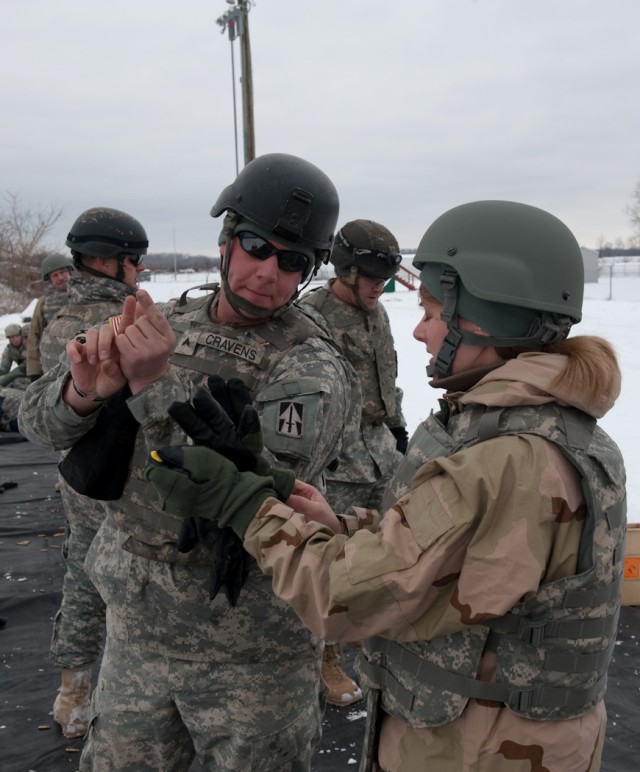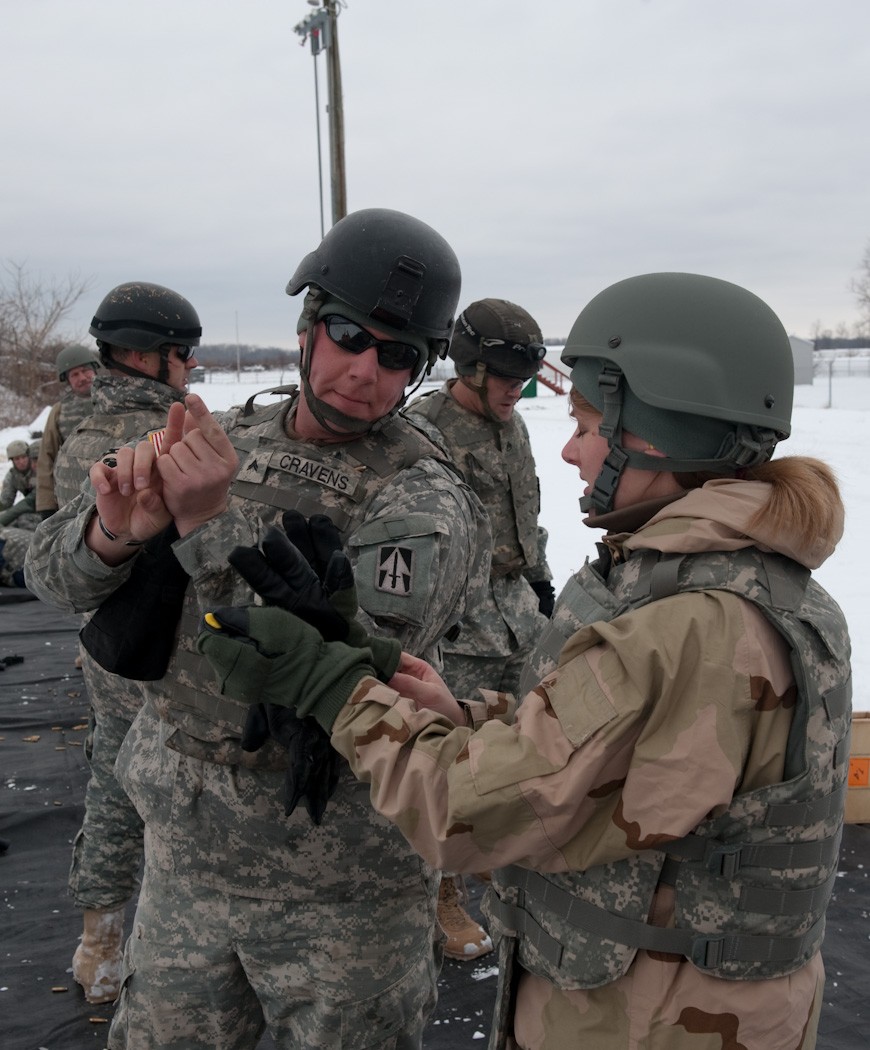
CAMP ATTERBURY JOINT MANEUVER TRAINING CENTER, Ind. (Army News Service, Dec. 30, 2010) -- It is an experience familiar to any Soldier: waiting in line for deployment processing. It's a seemingly endless series of queues as personnel move though the stations -- medical, dental, finance and so on.
But more and more, it is Department of Defense civilians going through those mobilization lines and deploying to the same conflict zones as Soldiers. There, they perform a variety of roles in theater, including helping with military operations and training both the host nation government and local industry.
The Civilian Expeditionary Workforce is a DOD program to deploy some of the department's civilian employees to support military operations on a volunteer basis. For the last year, civilians have received their training and processing at Camp Atterbury and the Muscatatuck Urban Training Center.
"This greatly prepares civilians with the necessary skill sets needed to work alongside the Soldiers in these conflict zones," said Bob Carrington, with the Office of the Secretary of Defense. "They receive training on combat patrol procedures, their actions during enemy contact and other emergency situations."
The civilians also receive training in the form of exercises where they have to interact with role-players in various situations in the execution of their duties. During these vignettes, the unexpected could happen, which usually takes the form of an insurgent attack by opposing forces.
"The scenarios are as realistic as you can get in a training environment," Carrington said. "They live on a forward operating base, they go on convoys with the Soldiers, they react to contact with the Soldiers. The more they train with the military, the more they will know what to expect and how to endure downrange."
The training for the CEW is split between Camp Atterbury and Muscatatuck.
At Muscatatuck, they perform the various training vignettes and learn to work with the Soldiers that will be protecting them in whatever theater they are deployed to.
The focus at Camp Atterbury is on readiness. The Individual Replacement Deployment Office here manages their activities and ensures that they are deployable.
It is at Camp Atterbury that civilians in the CEW program will go through the same process that Soldiers do when deploying: checking to ensure they can pass medical and dental health screens, taking a trip through the Central Issue Facility, familiarizing themselves with weapons, and taking medical classes.
Deployments involve change and uncertainty. This requires flexibility, said Murphy House, a weapons systems coordinator with Army Material Command at Ft. Belvoir, Va. House is preparing for his fifth deployment as a civilian.
"The schedule can change at a moment's notice," said House. "Everybody needs to be flexible and work as a team to get through this process."
For House, the deployments give him a chance to interact with the Soldiers in the field. He said it helps him better understand how Soldiers interface with the weapon systems his department is charged with procuring.
"By deploying with the Soldiers, I can observe the systems in the field; how they operate and how reliable these systems are," said House. "You have to learn about the Soldiers and their systems. The only way to get this experience is to go where the Soldiers are. It makes me a better advisor by understanding the conditions the Soldiers find themselves in."
House, who is a veteran of other deployment centers, said the strong noncommissioned officer leadership at the IRDO helps make it a polished deployment center.
"There are many facets to this process and it could have been an unhappy process, but they have the right people and tools coupled with a variety of experience to make this work," said House.
According to 1st Sgt. Michael Mullins, senior noncommissioned officer at the Camp Atterbury IRDO, the IRDO is similar to the CONUS Replacement Center at Fort Benning, Ga. However, the CRC deploys Soldiers as well as civilians, the IRDO is focused solely on civilian programs like the CEW.
"Because we're smaller in scope, we can provide more hands-on training for the CEW," said Mullins. "The training they receive here may be the last chance they get to learn these skills and that can be the difference between life or death in some cases."
With the success of the IRDO, Fort Benning has been sending more CEW classes to receive their training here.
"Camp Atterbury has a solid reputation as a power projection platform. We have exceeded expectations for this program, so Benning is pushing more CEW personnel up here for training," Mullins said.
"I'm proud of what is happening here. They aren't just coming here because of our facilities, but also because of our attitude and our professionalism. I think it is something that the state of Indiana and the National Guard Bureau can be proud of as well," said Mullins.
(Staff Sgt. David Bruce writes for Camp Atterbury Public Affairs)

Social Sharing